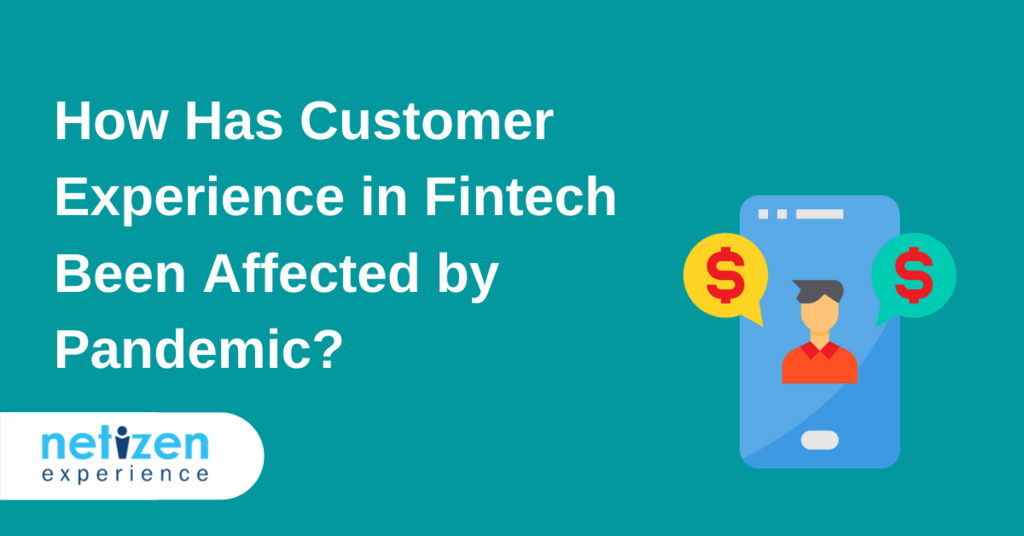As much as COVID-19 has created a surge of opportunities for the financial technology (fintech) industry. Like many other industries, the fintech industry has been affected, both positively and negatively. As a result, customer experience has also been affected accordingly. How has customer experience in fintech been affected by the pandemic? Here are 5 different ways how COVID-19 has affected the fintech industry and customer experience:
In this Article
1. Number of Alternative Lenders Have Decreased
There has been a noticeable decline in profit across small and large businesses alike, even retail customers. If you look around, have you noticed certain shops have been unable to survive and are now closed?
The level of consumption has not only decreased but the level of defaults is also raising, the decline in financial wealth of the economy has reduced the demand for various loans during the lockdown.
According to a study by Cambridge, between 2017 and 2018, market volumes for alternative finance in Asia Pacific grew by approximately 70% from $3.64 billion to $5.90 billion. This trend has been staggered by the global pandemic where a lower demand and tightened requirements have resulted in a drop of loan issuance. Instead, there are more people having to default on their loan repayment.
With the economy being in such a state, with the decrease in demand for loans, the insolvency of borrowers and economic uncertainty around us, the number of alternative lenders have also decreased as a result of COVID-19.
Due to the decrease in alternative lenders, customers have higher expectations for the surviving fintech companies to provide excellent financial services, as well as more lenient lending policies due to the economic recession as a result of the global pandemic.
2. Momentum for Survivors
Funding for fintech in Asia has dropped by nearly 70% in Q1 of 2020 from the prior quarter according to CB Insights, this has been the lowest it’s ever been since 2016.
The limited access to funding and the struggle for survival has created an environment that will tickle Darwin’s fancy for the survival of the fittest. Those who can’t make it will leave the industry to the hands of the stronger companies, the survivors.
Therefore creating a momentum for surviving companies to rise up to the challenge, especially since it may be difficult for new players to catch up in this setting.
Customers expect reliability from the survivors, as well as further development to improve their services. Fintech services are expected to implement additional features in making customers’ lives easier, especially when customers are utilising their services daily.
3. Digital Finance’s Expansion
Remote services are booming, whether it’s delivery services, online shopping, mobile payments or streaming services, we can’t deny that there’s been a noticeable increase in remote services compared to 2019. The situation where everyone has been asked to stay home and stay safe has created a golden opportunity for the boom of digital finance, and it’s likely that we’ll keep this active even post-pandemic as we grow accustomed to the advantages of it.
We rarely need to use cash anymore, in fact, it’s encouraged to use cashless payments or contactless payments, so much so that countries such as United Kingdom and Germany have increased the maximum spending limit on contactless payment. Germany, where ‘Cash is king’ has long been the motto for German consumers and business, has seen a rise from 35% to 50% since the start of the year for the number of contactless transactions according to The Star.
This effect of COVID-19 on the fintech industry is evident from the press conference made by the Chinese Banking and Insurance Regulatory Commission for Chinese financial institutions to prioritize in-house fintech capabilities, pushing for the adoption of fintech and regulatory technology (regtech).
With the expansion of digital finance, customers expect fintech services to be usable in more areas of their lives. For example, GrabPay has expanded their fintech services so that customers are able to make contactless transactions at grocery stores, pharmacies, as well as fast-food chains. This development was made by Grab, the company recognised the shift in consumer acceptance of cashless payment and expanded accordingly to keep up with customer expectations.

4. Breaking Borders Between Banks and Fintech
Fintech has been disrupting traditional banking, and one of the ways that traditional banks can flourish is by following this motto: ‘If you can’t beat them, join them.’
Traditional banks are looking to fintech increasingly because digitisation is inevitable, and with the economic recession due to the global pandemic, it’s never been more important for banks to collaborate with fintech to survive.
Digital customer experience or user experience is vital in keeping up with the digital age, posing a challenge for traditional banks in changing operating models and culture that has been around since their inception. The shift in breaking down the borders between banks and fintech as an effect caused by COVID-19 should hopefully result in better financial solutions for consumers alike.
In addition, due to the lack of funding, fintech companies find themselves in a position to cooperate with banks. While fintech companies get capital and resources for development, banks stand to benefit from fintech’s technological potential in improving their services.
We see more and more collaboration between fintech and banks coming together and customers expect a frictionless collaboration between the two parties, to a point where it’s indistinguishable and it feels like wholesome financial service.
Maybank has made a step in breaking down the border by collaborating with Grab in launching a new credit card called Maybank Grab Mastercard Platinum Credit Card. This plays into customers’ expectations for frictionless collaboration where the credit card allows customers to make transactions using a credit card whilst reaping Grab reward points.

5. Developing For Higher Personalisation
Aside from digital finance, telemedicine has also become prominent amid the pandemic where technology has enabled doctors to consult patients and to care for them remotely. Continued daily recording and tracking of body temperature and other biological data such as blood pressure could potentially be a gold mine of information used for higher personalisation.
Imagine going into a consultation and being able to present your biological data to your doctor for further analysis, it could be similar to using data analytics but for your health.
Even with contactless payment, by integrating and collaborating with finance management tools, there is no longer a need for manual record-keeping. Customers would expect all the payment records to be automatically captured and freely sync to their financial management tools to help them with their budget planning.
Along with tracking orders of online shopping and delivery services, AI can make use of all this data to create a hyper-personalised experience for users, making it easier for customers to shop, to order food, and even receiving personalised recommendations.

